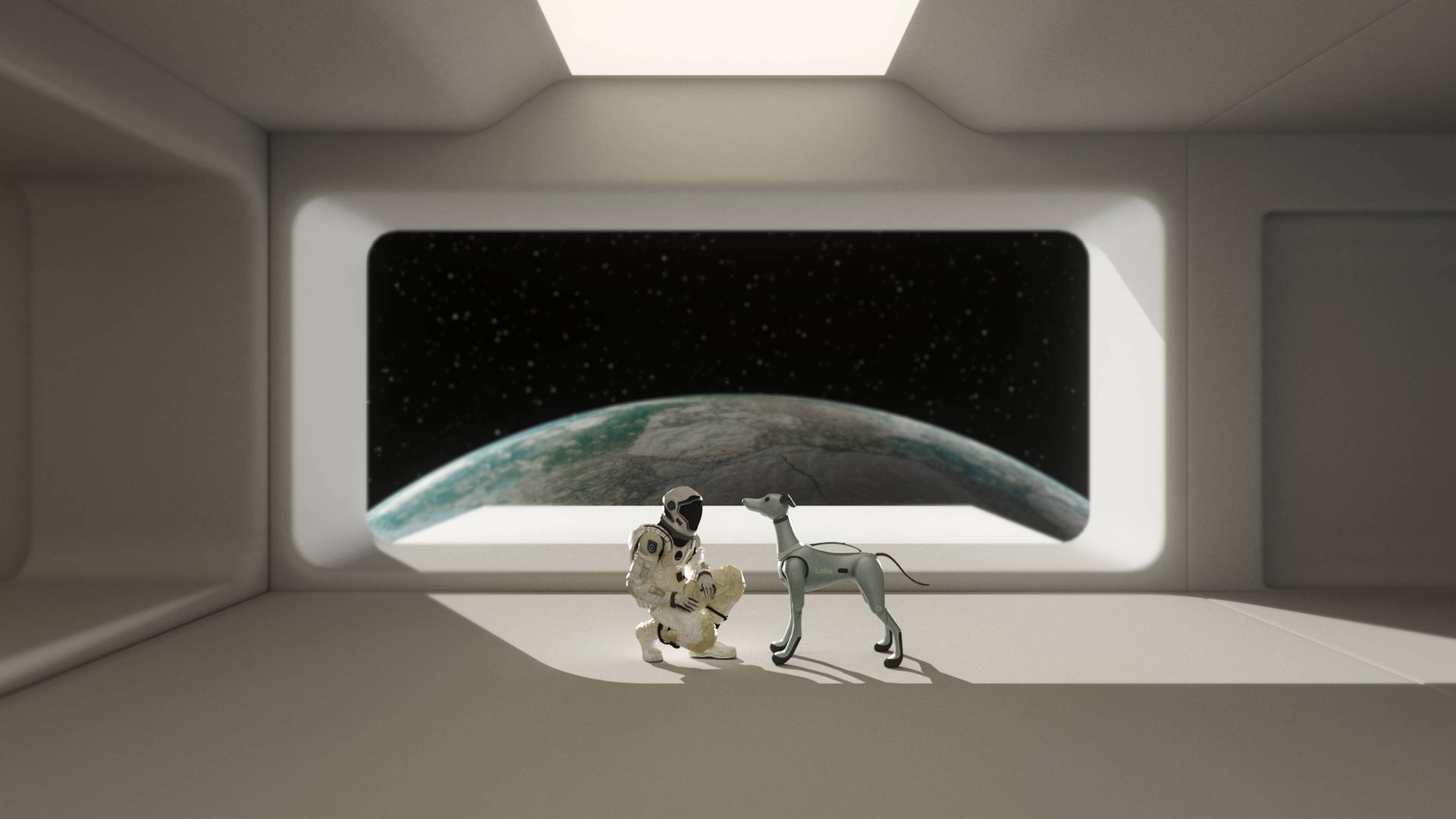Dogs in space: this friendly canine AI is designed to comfort lonely astronauts
Long-range space missions pose huge psychological problems. This robotic dog is designed to keep astronauts company whilst checking their vital signs

The loneliness of the endurance space mission was the problem in hand for Hongik University design student Jihee Kim, under tutor Tate Eunyoung Kim. How can space agencies ensure astronauts have some kind of companion on voyages that might last for years, not months?
Laika, the robotic dog for space travellers

Her conceptual solution is to harness the enduring relationship between humans and dogs through a sophisticated AI robotic pet dubbed Laika. A blend of the cuddly kawaii stylings of Sony’s original Aibo (launched in 1998) and the sophisticated but sinister mechanics of Boston Dynamic’s Spot, Laika is designed for comfort and companionship.

Kim’s creation is amiable and attractive, the product of the Hollywood entertainment complex rather than the military-industrial one. Motions and reactions are all modelled on flesh and blood hounds, but the industrial design in unashamedly robotic – there’ll be no walkies in the uncanny valley.

As well as the all-important emotional engagement, this four-legged friend is also a mobile monitoring station, checking in on vital health stats as well as the on-board systems. Depth cameras, thermal imagining cameras and Simultaneous Localization and Mapping cameras (SLAM) help Laika get about on its graceful titanium limbs, whilst well-laced electrocardiography sensors are located on petting points on the back and neck, allowing the robot to seamlessly check on vital stats.

Granted, naming the pet after the pioneering yet perished Soviet space dog from 1957 might give even the dimmest AI pause for thought, but the intention is a serious one: an astronaut needs unstinting and trusting company for a mission that might last years.

Robotics has developed in literal leaps and bounds in recent years. A dog feels like a logical animal for a robot to imitate and the introduction of Spot in 2016 marked the point at which military-funded hardware dovetailed with industrial needs, and the spooky-limbed quadruped is now an established means of remote monitoring and patrolling large sites.

Laika sets out to fuse faithful service with practical assistance, and just a hint of steely strength. She could well be the shape of things to come.
Laika, by Jihee Kim, Hongkik University, Seoul, Behance Portfolio
Wallpaper* Newsletter
Receive our daily digest of inspiration, escapism and design stories from around the world direct to your inbox
Jonathan Bell has written for Wallpaper* magazine since 1999, covering everything from architecture and transport design to books, tech and graphic design. He is now the magazine’s Transport and Technology Editor. Jonathan has written and edited 15 books, including Concept Car Design, 21st Century House, and The New Modern House. He is also the host of Wallpaper’s first podcast.
-
 Gallery Fumi makes LA debut with works from Max Lamb, Jeremy Anderson and more
Gallery Fumi makes LA debut with works from Max Lamb, Jeremy Anderson and moreFumi LA is the London design gallery’s takeover of Sized Studio, marking its first major US show (until 9 March 2024)
By Tianna Williams Published
-
 Brazil’s Casa Subtração contrasts dramatic concrete brutalism with openness
Brazil’s Casa Subtração contrasts dramatic concrete brutalism with opennessCasa Subtração by FGMF is defined by brutalist concrete and sharp angles that contrast with the green Brazilian landscape
By Ellie Stathaki Published
-
 Level up at the The Residence, Claridge’s new André Fu-designed penthouse
Level up at the The Residence, Claridge’s new André Fu-designed penthouseClaridge’s The Residence is a new purpose-built two-tier glasshouse overlooking London’s skyline
By Lauren Ho Published


